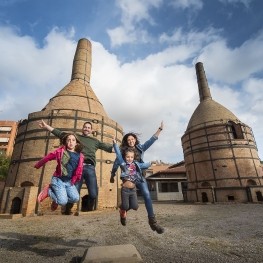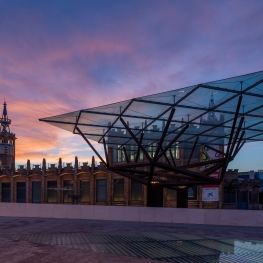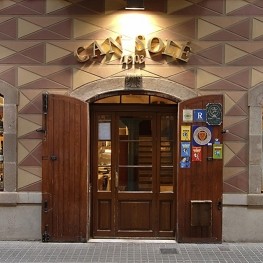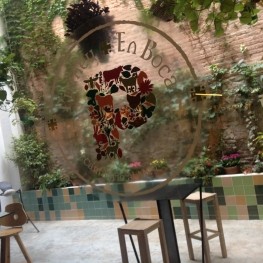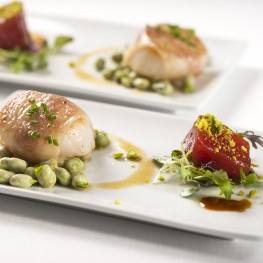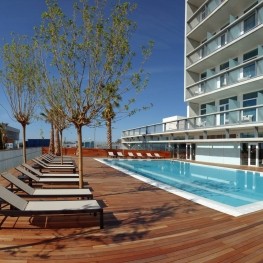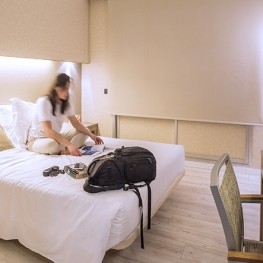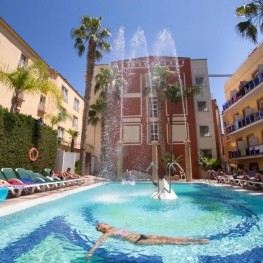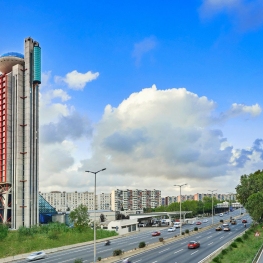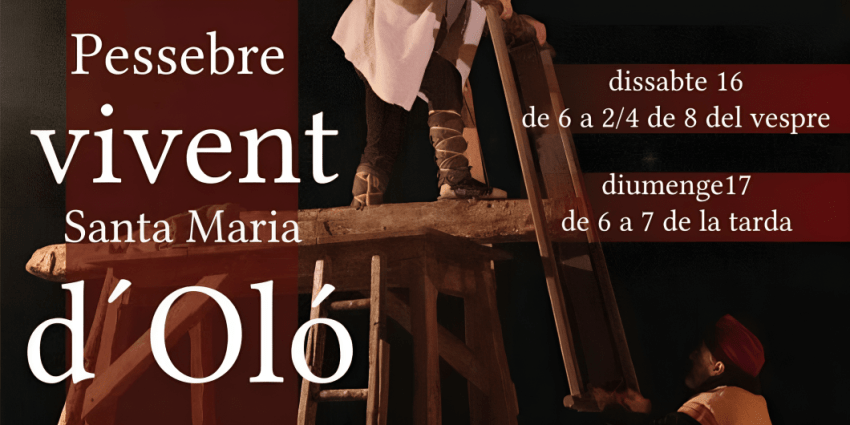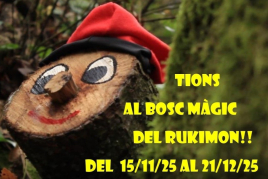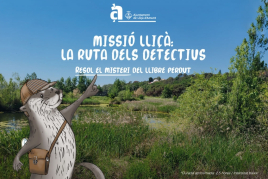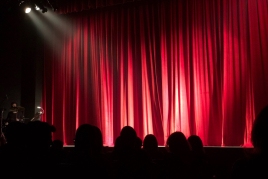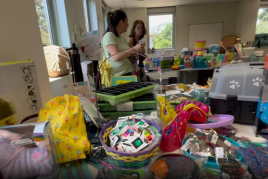Following the work of Puig i Cadafalch along the coast
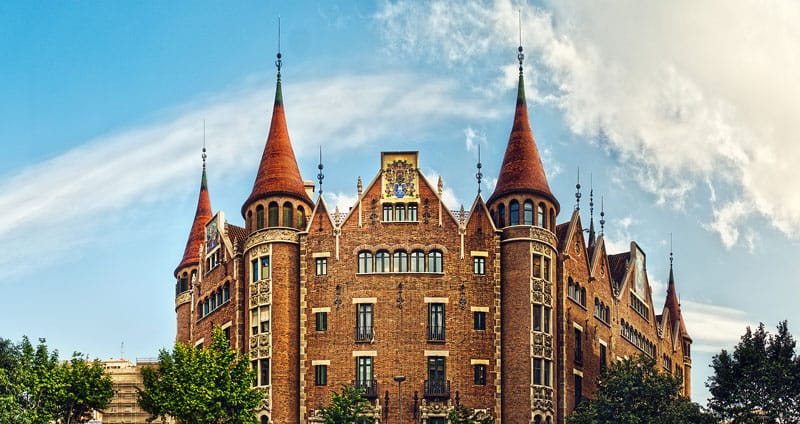
The cultural movement of modernism made ??his mark in Catalonia and, unlike other artistic movements, presented a special dimension since spread throughout Catalonia and not just in big cities.
At the time that was experienced and spread this movement Catalunya situation was favorable. Then there was a national reaffirmation and significant economic growth. For this reason, this style is present in several buildings: agricultural cooperatives, factories, markets, housing, etc..
As for the meaning of the Modernism movement, this hosted two different connotations. On one hand, as assumed modernization construction techniques. And secondly, the traditional crafts claim against a domain industry.
In this context, they noted, especially, popularly known three architects: Gaudí, Domènech i Montaner and Puig.
On this occasion I propose to make a route starting from part of the Costa Brava to the coast of Barcelona, ??following the coast ytranscurriendo by the Maresme, in order to observe the legacy of architect Puig linked with Modernism and recalling its words about this movement "have gotten together a modern art from our traditional art, adorning it with beautiful new materials and adapting the national spirit to the needs of the day."
The legacy of Puig in Lloret de Mar and El Maresme
We propose to start the route in the town on the Costa Brava in Lloret de Mar .
 Specifically, we will go to the shrine of Sant Pere del Bosc, which was renovated by Puig by an Indian custom Nicolau Font. This sanctuary is located 5km from the town center, in the middle of a wooded area of ??the Sierra de la Marina.
Specifically, we will go to the shrine of Sant Pere del Bosc, which was renovated by Puig by an Indian custom Nicolau Font. This sanctuary is located 5km from the town center, in the middle of a wooded area of ??the Sierra de la Marina.
On the way there we worship space a chapel dedicated to Our Lady of Grace and boundary cross designed by the same architect.
In the same town, but this time in the cemetery, Puig made ??in 1902 the work of Costa and Macia Pantheon. So, before heading to Canet de Mar we recommend you visit.
The Puig footprint continues in the city's Maresme Canet de Mar . Performing a walk in the park you can admire Mercy a building floor plan and Puig own neo-Gothic windows reminiscent of the iconic local the Quatre Gats. Currently the building houses a restaurant, so if you do appetite may eat something.
Also, we recommend that reaches the 111th Lledoners Riera factory where you will find knitting Carbonell Reverter and where we see how the industry influenced Modernism.
A 20-minute drive, and before heading into the town of Puig, we move to Argentona for other works: the architect's summer house (square Sell, s / n), the Chapel of the Sacrament (square of the church), Can Calopa (Bernat Riudemeia, 8), who decorated the interior and exterior, and the House Garí (road to San Miguel del Cros, 9). The latter is a converted manor house, a posteriori, a noble palace.
The hometown and his mark
 Puig was born in October 1867 in Mataró . For this reason the town is full of works by this artist. It is even present in the City (Riera, 48) as reformed Puig Chamber of the Town Hall dominated Catalan national symbols ornaments, shields and valances.
Puig was born in October 1867 in Mataró . For this reason the town is full of works by this artist. It is even present in the City (Riera, 48) as reformed Puig Chamber of the Town Hall dominated Catalan national symbols ornaments, shields and valances.
Also in this population we recommend to visit the birthplace, the Rengle market (Plaza Gran, s / n), where you have to look with ceramic roof and ornamental wrought iron, shop Confidence (San Cristobal, 10) where you should access inside to appreciate the decor, the House Parera (New, 20), the Charity (San Jose, 9) and the House Coll i Regàs (Argentona, 55). This last house is considered one of the jewels modernist houses the population of Mataró .
The Puig Barcelona
Although Mataró is a significant number of works by Puig, most are concentrated in Barcelona .
 Puig spent much of his life in this city where he contributed prominently in social and political life of it. We appreciate their work in different parts of the city.
Puig spent much of his life in this city where he contributed prominently in social and political life of it. We appreciate their work in different parts of the city.
One of the most significant buildings built and played a significant role in Modernism, beyond the architectural as it is a neo-Gothic building is the Casa Martí.
This house, built in 1896, is located on the street Montsió number 3 on the ground floor is situated the place the Quatre Gats.
Els Quatre Gats was a local reference of the time as it was the meeting place of the modernists. Currently, continues to operate as a restaurant.
In Boqueria street number 9 is another house commissioned by the owner of the Casa Martí. This building was long the inn "Branch of the Universe".
However, one of the most important houses built was Amatller House (Paseo de Gracia, 41) for, as the name suggests, the chocolate industry.
In a parallel street (Rambla de Catalunya) is Casa Serra built in 1903. With a façade plateresco was during the Spanish Civil War headquarters of the Ministry of Health. It currently houses the Barcelona Provincial Council.
Other housing can not overlook is the home visit the Punxes or, also known as Terrades House, a building that is structured around three scales and are located on Avenida Diagonal.
 The policy area also took part of their creations. With the Commonwealth recovered Catalan Generalitat Palace and Enric Prat de la Riba, then commissioned Puig rehabilitation of the building. He also built a monument to the Catalan formed by four Ionic columns symbolizing gules four suits of the flag. But it was shot down during the dictatorship of Primo de Rivera. Although in 2010 were re-raise.
The policy area also took part of their creations. With the Commonwealth recovered Catalan Generalitat Palace and Enric Prat de la Riba, then commissioned Puig rehabilitation of the building. He also built a monument to the Catalan formed by four Ionic columns symbolizing gules four suits of the flag. But it was shot down during the dictatorship of Primo de Rivera. Although in 2010 were re-raise.
In the Plaza of the Cascades where the monument preserves the Palace of Alfonso XIII and Victoria Eugenia built by him for the 1929 International Exhibition.
Close to these is Casaramona Factory, which witnessed the construction of an industrial building in modernist style. Currently hosting the CaixaFòrum.
In this industry, Puig also designed the Marconi telegraph building in the town of El Prat de Llobregat
Finally, it is also recommended to get to Vilamoura and see the Casa Pilar Moragues located on the perimeter of the camp of "El Toro Bravo". This building was built during the "white period".
 Puig
Puig
Josep Puig was born in 1867 in Mataró and died in 1956 in Barcelona . It was an art historian, political modernist Catalan architect. He was a disciple of Domènech i Montaner which adopted a historicist influence and is considered the last representative of Modernism. Emphasized, apart from their works, for being a great supporter of an ideology of country. Which is why in 1917 was president of the Commonwealth as heir to Enric Prat de la Riba. However, with the dictatorship of Primo de Rivera decided to go to France in 1923.
What to do
CaixaForum, Fundació La Caixa
Barcelona (a 2.8 Km)Discover CaixaForum, a fun way to connect with culture and science, and…
Gené Karting
ViladecansGené Karting Viladecans is a European benchmark for indoor tracks for corporate…
Where to eat
L'Espai Gastronomia
Tossa de Mar (a 7 Km)Enjoy a place where laughter, festivity, and gastronomy unfold around a large…
Restaurant Windsor
Barcelona (a 2.2 Km)The Windsor restaurant, located in Barcelona, is a benchmark of contemporary Catalan…
Where to sleep
Aparthotel Silver
Barcelona (a 3.1 Km)Aparthotel Silver is one of the recommended establishments in Barcelona. It offers…
Hotel Hyatt Regency Barcelona Tower
Barcelona (a 2.1 Km)The Hyatt Regency Barcelona Tower hotel will offer you an unforgettable experience…


